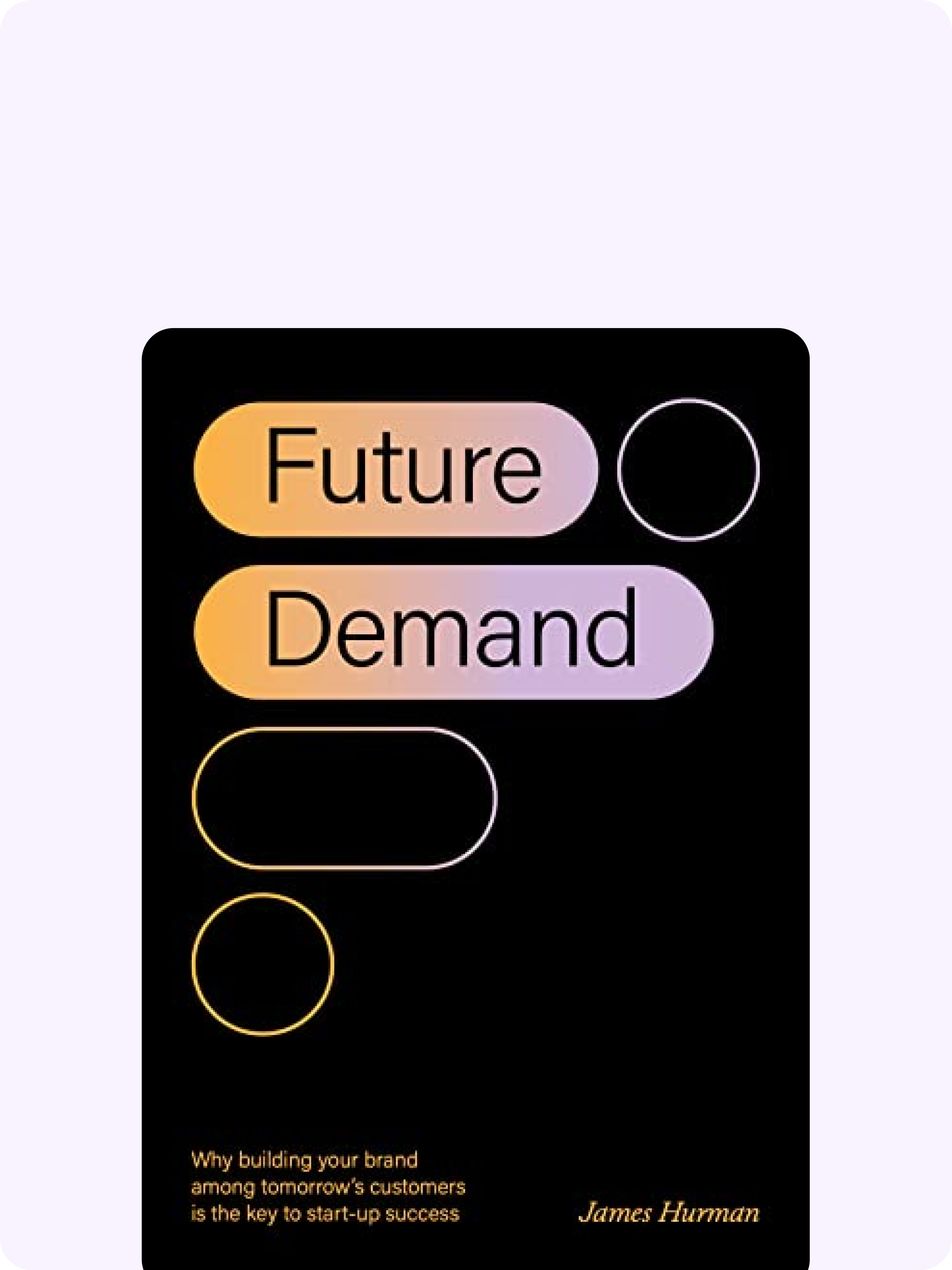The Dull-O-Meter Scale: Use this to elevate your brand marketing strategy

Emotional marketing is key to a successful brand. We all know that as brand marketers, right? But why does reality look so different? Data shows that customers are connecting less and less with brands: 4 out of 5 brandsOpens in new tab no longer connect emotionally with customers, and 82% of customers say they’re no longer excited by brands. Ooof.
In Australia alone, ad spendOpens in new tab is projected to reach $19.43 billion, while the US is poised to reach a staggering $422 billion in 2024. Despite growing budgets, why isn’t it translating to increased engagement with customers? And what are the risks of playing it safe — including in terms of costs? Today, we take a closer look at how your company can step up its brand marketing game using the Dull-o-Meter.
Sign up to Shorts
For fortnightly brand insights, stories and goodness that'll help you win (we promise).
The problem with dull advertising 😴🥱
Adam MorganOpens in new tab, an eatbigfish Partner and Brand & Marketing Consultant, has popularized the concept of dull advertising together with marketing consultant global marketing effectiveness guru Peter Field. Simply, dull advertisements don’t appeal as much to the viewer’s emotions: they’re primarily fact-based and logical.

Source: Adam Morgan, eatbigfishOpens in new tab website
Meanwhile, “fame” or creative ads are emotionally-charged and brand-centric, triggering viewers to talk about or share them. And while you might think that most brands would try to have a stronger focus on emotional brand marketing, that’s not exactly the case. In fact, what we see most often is that larger brands with bigger budgets are more risk-averse and lean towards dull advertising.
(For more insights into why great brand marketing is emotion-driven, check out the insights from Helen Costello at our Building Brands of the Future event here.)
But why are there hidden costs to being risk-averse?
Here’s the short version: Adam and Peter studied hundreds of ad case studies that ran between 1999 to 2022. They noted which ads made consumers feel some sort of emotion (whether positive or negative) and which ads consumers reported feeling no tangible effect or friction—dull ads. They studied the cases that had high share gain rates and were extremely successful, then compared them to dull campaigns to determine what it would cost for dull campaigns to have the same impact as a “fame” ad. In the UK, it would cost an average of £9.2 million (climbing up to £17 million for retail campaigns) for dull campaigns to acheive the same impact as non-dull advertising. For the U.S.? A whopping $24 billion.
To be clear: dull campaigns can work, it’s just that it takes much more effort (and ad spend!) to do so. For larger corporations, they’re often less likely to take risks, which means they’ll spend more money to achieve the same level of performance as a more exciting campaign.
The other issue with dull advertising that Adam raised is that your brand may be inadvertently excluding people from engaging with your content. If you launch a dull campaign, ask yourself: are the people you’re targeting going to feel anything from your work? Whether you’re in the business of performance marketing (focused on short-term sales), or brand marketing (upper-funnel, long-term marketing), if your brand can’t even grab the attention of your potential clients, how will you be able to make them take action or remember your brand down the road?
Introducing: the Dull-o-Meter 📏 ⚖️
To you determine whether you need to elevate your brand marketing, Morgan created the Dull-o-Meter: 5 questions your marketing team can use to rate themselves on a scale of 1 to 10 and see how well you’re doing on emotional brand marketing.
Our tips to get the most of the dull-o-meter? Don’t give a knee-jerk response, really feel what the question is asking. Be honest, even if it’ll mean your brand needs work. Plus, try to back up your hypothesis with analytics and data from across your organization.
With that out of the way, let’s dive into the questions.
On a scale of 1-10, how well are you doing on:
Meeting people where they care and speaking to them in their language?
While this extends beyond marketing — for example, a great teacher can take a complex subject like physics and relate it to something kids might be more interested in, like baseball—it’s also critically important in the world of branding to make sure your audience is interested in what you’re selling.
A fun example of this in practice is Gorillas’ tongue-in-cheek “Whatever London Wants” ad,Opens in new tab which pulled its data from the most-frequently bought products via the on-demand grocery delivery app and put Londoners’ cravings front and center. A brilliant way to really connect with your audience!
Denying the audience’s key assumptions and surprising them?
Predictable advertising confirms what the audience already suspects. In a world where consumers are inundated by brands vying for their attention, you need to flip the script on its head and challenge what the viewers think they know. By giving them something new, you’ll hook them in—like Persil’s “Dirt is Good” TV adOpens in new tab, which reframed how we think of dirt and stains on kid’s clothes.

SURREALOpens in new tab cereal does a great job at denying assumptions here to humorous effect.
Being genuine and distinctive to our true character, rather than saying something the same way everyone else is saying it?
Yes, it’s easy to just stick to what everyone else is saying — but what are you adding to the conversation? How are you standing out? Adam’s suggestion is to start by writing out everything you don’t want to say in your branding efforts, and then work from there. That way, you can infuse real personality into your brand assets, tone of voice, etc., and really make an impact.
Using emotion, drama, and humor instead of a fact-based, rational approach?
A great ad tells a rich, visual story. It should be funny. Bold. Daring. But if you opt to just tell your customers why your product is the best, instead of using a tapestry of emotions to show them, your campaign approach is probably quite dull.
A classic example of this working is the punchy, absurd “The Man Your Man Could Smell Like” Old Spice ad,Opens in new tab as it brilliantly sells the idea and potential of the body wash without pushing too hard. And with that unforgettable “I’m on a horse” line at the end, no wonder it’s been viewed 62 million times on YouTube since.
Using the real bar for judging whether this is engaging and interesting, or an invented one of our own?
While you might think that you’re only competing with similar brands for your audience’s attention, that’s only a small factor: your audience is consuming the news, social media, sports games, memes, and more. If you raise the bar to that level, are your brand communications measuring up to that level? With that kind of perspective in mind, it becomes a lot clearer just what you’re up against, and how critical it is to not bore your audience at all.
The finishing line 🏁
The cost of dull advertising is clear, but how can you validate the results of emotionally-driven advertising? If you’re trying to elevate your brand and performance marketing, start by using our Marketing Budget Calculator to work out your brand’s optimal brand and performance budget split.
Then, make sure your brand efforts are landing. With Tracksuit’s affordable, always-on brand health tracking, it’s easy to find out just how your brand is performing across the entire brand funnel, from awareness down to preference.
Plus, our dashboard tracks all the fundamental brand metrics — and those of your key competitors — so that you can understand where you sit in the market across the year.
Ambitious brand builders use Tracksuit to clearly demonstrate the ROI of their marketing efforts and drive buy-in from management.
Elevate your brand marketing today with Tracksuit.








